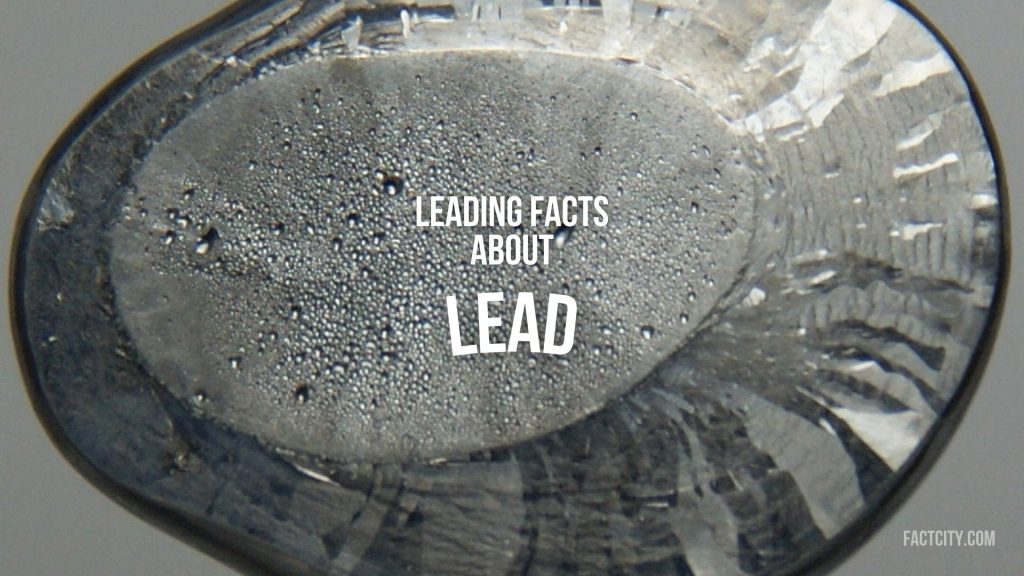When we think of lead, we tend to think of heavy materials, weaponry, and shielding materials. However, this is an extremely versatile element that’s more precious than you’d expect. Let’s take a look through some fascinating and fun facts about lead – just in case you face any science questions in your next pub quiz!
1. It is represented by the symbol Pb.
Lead is a chemical element that isn’t too easy to find on the periodic table! That is because it is represented by the symbol Pb and the atomic number 82. Pb refers to the Latin word for lead, plumbum.
2. It is a famously heavy metal.
Lead is indeed a heavy metal. It’s blueish-white when you cut it for the first time, but then it will tarnish to a duller grey colour upon exposure to air, which is why most of us know it by the latter colour.
3. It has been used for thousands of years.
Believe it or not, lead has been used by humans for thousands of years, dating back to ancient civilizations! It was used in pipes, cooking utensils, and cosmetics – though, for reasons we explore below, we’ve dialed back the personal use of this element somewhat!
4. Lead is highly toxic.
Despite having been used in cosmetics, lead is highly toxic to humans and other organisms. It can accumulate in the body over time and cause serious health problems, particularly in children.
5. Lead poisoning isn’t as easy to shake off as you might think.
You may have heard of lead poisoning, but do you know how dangerous it is? Lead poisoning can lead to physical and mental developmental delays, learning disabilities, behavioural problems, and a range of physical health issues, including damage to the nervous system and organs.
6. It has been banned in many countries.
Due to its dangerous properties, many countries have banned or restricted the use of lead. For example, in many countries it can no longer be used in products like paint, gasoline, plumbing, and more.
7. It used to contaminate water.
As mentioned above, lead used to be used in plumbing. However, the lead pipes could contaminate drinking water with lead if not properly treated. Therefore, it’s extremely unlikely you’ll find lead in piping across developed territories.
8. It is common in battery production.
Despite these health concerns, lead is still commonly used in lead-acid batteries. These batteries are mostly used in vehicles and backup power systems.
9. Lead pollution is still a real problem.
Lead pollution from past industrial and automotive activities continues to cause environmental issues. More specifically, it has left a legacy of contamination in soils and water, posing ongoing environmental challenges.
10. Pencils used to be made with lead.
Pencils were originally made with a lead-based material! However, graphite later replaced it as a safe alternative. Despite the name, pencils have never contained elemental lead – though many of us still refer to the insides of pencils as the leads!
11. It is very dense.
As you might imagine, lead is very dense. In fact, it is one of the densest naturally occurring elements, and it has a relatively low melting point. Gold and iridium are considered two of the most densest naturally occurring elements.
12. It can be recycled.
Believe it or not, lead can be recycled. In fact, recycling lead is crucial for reducing environmental contamination and conserving resources. Recycled lead creates new batteries, cabling, and radiation shielding.
FAQs about Lead
What is lead used for?
Nowadays, society is trying to steer away from using lead in cosmetics, paint, and other common products. Now, it is primarily used in batteries and ammunition, where it is still useful but less likely to cause serious harm.
Is it safe to touch lead?
Yes, generally speaking, it is safe to touch lead. In fact, the main issues people face are when it is breathed in or swallowed.
What makes lead so toxic?
Lead’s ions poison proteins in the body. In doing so, they block their normal function, therefore becoming extremely harmful to humans!
Further reading
https://facts.uk/tag/Science/
https://pubchem.ncbi.nlm.nih.gov/element/Lead
https://chemistrytalk.org/lead-element/
Do you know any interesting facts about Lead? Share them in the comments below!
